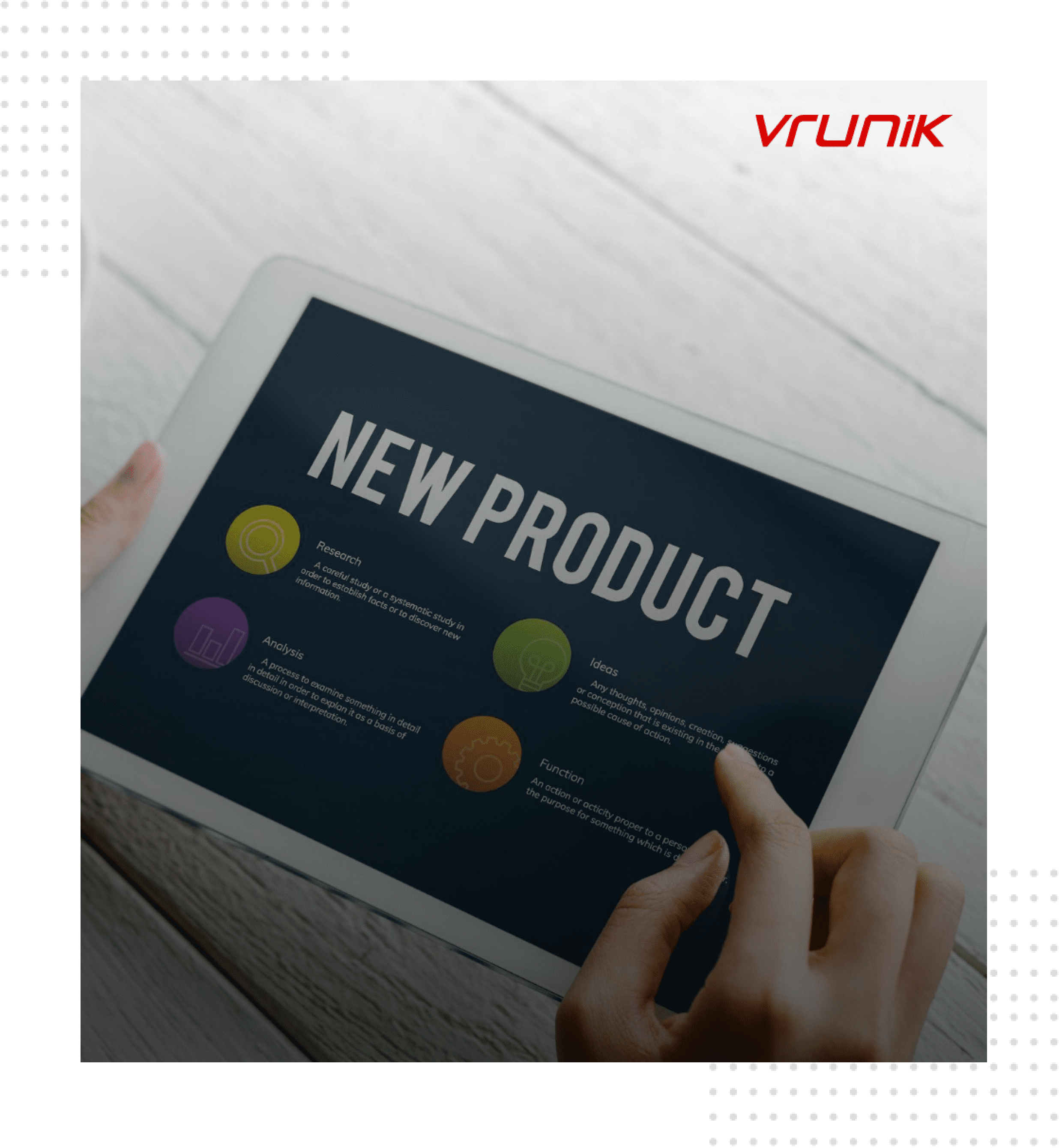OUR BLOG
The Comprehensive Guide to Product Design:
Crafting Exceptional Products for the Modern World
Product design is a dynamic and multifaceted discipline that plays a central role in shaping the world around us. Whether you’re crafting physical goods we hold in our hands, digital interfaces we interact with daily, or data-driven solutions that power our experiences, understanding the principles and processes of product design is essential. In this comprehensive guide, we’ll delve deeper into the fundamentals of product design, exploring the key stages of the design process and how these principles can be applied to create innovative and impactful products that resonate with users.

Understanding Product Design: A User-Centric Approach
Product design goes beyond mere creation; it’s about crafting solutions that address real- world problems and enhance user lives. This requires a deep understanding of the target audience – their needs, desires, pain points, and behaviors. It’s about designing with empathy, putting yourself in the user’s shoes to understand their frustrations and aspirations. But product design isn’t solely user-focused. It also considers the business goals of the organization. A successful product seamlessly bridges the gap between user needs and business objectives, creating a delightful user experience that translates into value and growth for the company. This delicate balance between user-centricity and business goals requires a product designer to possess a blend of creativity, empathy, and technical expertise.
Key Stages of the Product Design Process: A Roadmap to Success
The product design process is an iterative journey, typically consisting of several key stages:
- Research and Discovery: Unearthing Needs and Opportunities
This initial stage is all about gathering valuable insights. Through user research methods like surveys, interviews, and usability testing, designers gain a comprehensive understanding of user needs, market trends, and competitor products. It’s about asking the right questions: What problem are we trying to solve? Who are we solving it for? What are existing solutions in the market, and how can we improve upon them? By immersing themselves in user research, designers can identify opportunities for innovation and craft products that truly address unmet needs. - Concept Development: Brainstorming Solutions
Armed with the insights gleaned from research, designers embark on a phase of exploration and experimentation. This is where creativity takes center stage. Brainstorming sessions generate a multitude of ideas and concepts for the product. Sketches, wireframes, and prototypes come to life as designers explore different approaches to solving the identified problem. The key is to not be afraid of bold ideas – sometimes the most innovative solutions come from thinking outside the box. - Design Refinement: Iteration is Key
Once a promising concept is chosen, designers delve into the process of refining it. This stage involves creating high-fidelity prototypes that closely resemble the final product. Usability testing with real users is crucial here. By observing how users interact with the prototype, designers can identify areas for improvement and iterate on the design to make it as user- friendly and intuitive as possible. This back-and forth process of testing, refining, and retesting ensures that the final product is not just functional but also a pleasure to use. - Engineering and Production: Bringing the Design to Life
With a finalized design in hand, the baton is passed to the engineering team. Here, the focus shifts towards developing the product and preparing it for mass production. Engineers translate the design specifications into technical blueprints, source materials, and establish manufacturing processes. This stage requires close collaboration between designers and engineers to ensure the product’s functionality, quality, and manufacturability remain intact. - Launch and Evaluation: Measuring Impact and Refining
The final stage marks the product’s big debut in the market. But the journey doesn’t end there. The launch is followed by a critical evaluation phase. Designers and product managers collect user feedback through various channels, analyze sales data, and track user engagement metrics. This data provides valuable insights into how the product is performing in the real world. Based on this feedback, designers can make improvements and iterate on the product to ensure it continues to meet user needs and deliver a positive user experience.
Types of Product Design: A Spectrum of Possibilities
The world of product design encompasses a diverse range of products, each with its unique
design considerations. Here’s a glimpse into the different types of product design:
- Physical Products: These are the tangible objects we interact with in the physical world, from smartphones and furniture to medical devices and household appliances.
- Digital Products: Existing in the digital realm, these products include software applications, websites, and mobile apps. User interface (UI) and user experience (UX) design play a critical role in crafting intuitive and engaging digital experiences.
- Data Products: This category focuses on designing products that leverage data to deliver insights and value. Examples include data visualization tools, business intelligence dashboards, and machine learning algorithms.
Key Principles of Product Design: A Guiding Light (continued)
Several core principles serve as a guiding light for product designers throughout the design process. Let’s explore some of the most essential ones:
- Storytelling: Great products don’t just fulfill a function; they evoke emotions and tell a story. By weaving a narrative into the design, product designers can connect with users on a deeper level and create a more memorable experience. This could involve crafting a clear value proposition, designing a delightful user journey, or even incorporating elements of brand storytelling into the product itself.
- Emotional Design: Humans are emotional creatures, and our design choices can significantly impact how users feel when interacting with a product. Emotional design goes beyond aesthetics; it considers the user’s emotional needs and aspirations. By incorporating elements that evoke positive emotions like joy, satisfaction, or trust, designers can create products that resonate more deeply with users.
- Design for Delight: While usability is crucial, exceptional products go a step further by creating moments of delight for users. This could involve surprising users with unexpected features, making interactions playful and engaging, or exceeding user expectations in subtle ways. By infusing a touch of delight into the design, product designers can create products that users truly enjoy interacting with.
- Design for the Future: The world of technology is constantly evolving, and product design needs to keep pace. By staying informed about emerging trends and technologies, designers can create products that are not only relevant today but also adaptable and scalable for the future. This forward-thinking approach ensures products remain competitive and continue to meet user needs in a constantly changing landscape.
- Business Viability: Ultimately, successful products need to be commercially viable. While user-centricity is paramount, product designers must also consider the business objectives. This means keeping production costs in mind, designing for manufacturability, and ensuring the product aligns with the brand’s overall strategy. Balancing user needs with business goals is a key skill for any product designer.
Conclusion:
The Power of Design Thinking
Product design is not just about creating products; it’s about crafting solutions that improve lives. By understanding the core principles and embracing a user-centric approach, product designers can create innovative and impactful products that resonate with users and make a positive difference in the world. The design process is an iterative journey, fueled by empathy, creativity, and a constant desire to learn and improve. By embracing design thinking, product designers can bridge the gap between user needs and business goals, ultimately shaping the future of the products we use and interact with every day.
This comprehensive guide has provided a foundation for understanding the exciting world of product design. Whether you’re a seasoned designer or just starting your journey, remember that product design is a powerful tool for creating positive change. By applying these principles and fostering a design-thinking mindset, you can contribute to crafting exceptional products that leave a lasting impact.
If you are interested in learning more about how UX design can help to transform your legacy systems and ensure business continuity, please feel free to reach out to me at nk@vrunik.com or call +91 9554939637.
This Blog is posted on: https://indiaai.gov.in/article/enhancements-and-limitations-of-ai-in-ux-design


